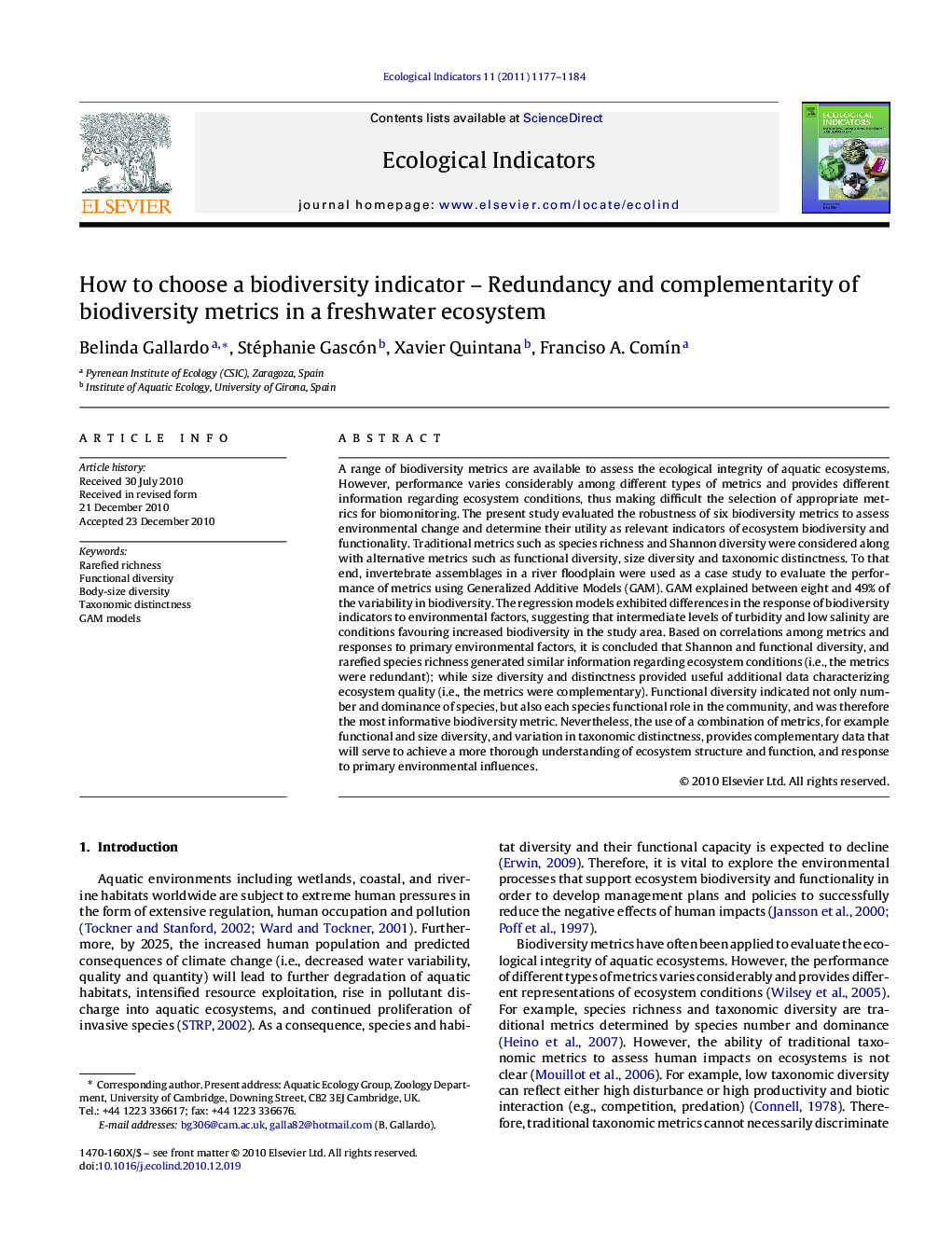| Article ID | Journal | Published Year | Pages | File Type |
|---|---|---|---|---|
| 4374053 | Ecological Indicators | 2011 | 8 Pages |
A range of biodiversity metrics are available to assess the ecological integrity of aquatic ecosystems. However, performance varies considerably among different types of metrics and provides different information regarding ecosystem conditions, thus making difficult the selection of appropriate metrics for biomonitoring. The present study evaluated the robustness of six biodiversity metrics to assess environmental change and determine their utility as relevant indicators of ecosystem biodiversity and functionality. Traditional metrics such as species richness and Shannon diversity were considered along with alternative metrics such as functional diversity, size diversity and taxonomic distinctness. To that end, invertebrate assemblages in a river floodplain were used as a case study to evaluate the performance of metrics using Generalized Additive Models (GAM). GAM explained between eight and 49% of the variability in biodiversity. The regression models exhibited differences in the response of biodiversity indicators to environmental factors, suggesting that intermediate levels of turbidity and low salinity are conditions favouring increased biodiversity in the study area. Based on correlations among metrics and responses to primary environmental factors, it is concluded that Shannon and functional diversity, and rarefied species richness generated similar information regarding ecosystem conditions (i.e., the metrics were redundant); while size diversity and distinctness provided useful additional data characterizing ecosystem quality (i.e., the metrics were complementary). Functional diversity indicated not only number and dominance of species, but also each species functional role in the community, and was therefore the most informative biodiversity metric. Nevertheless, the use of a combination of metrics, for example functional and size diversity, and variation in taxonomic distinctness, provides complementary data that will serve to achieve a more thorough understanding of ecosystem structure and function, and response to primary environmental influences.
